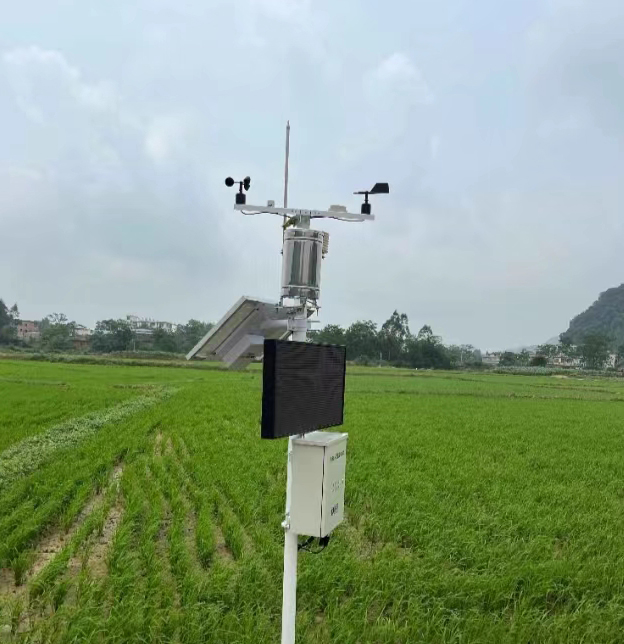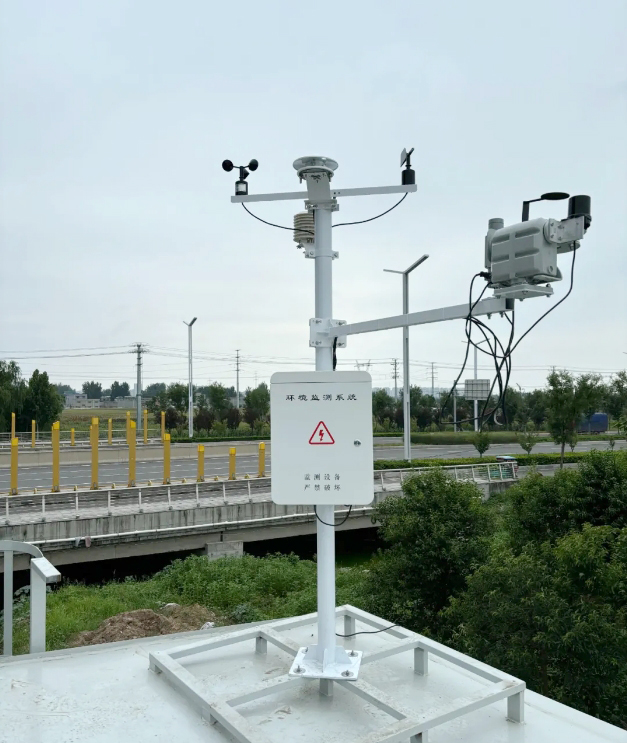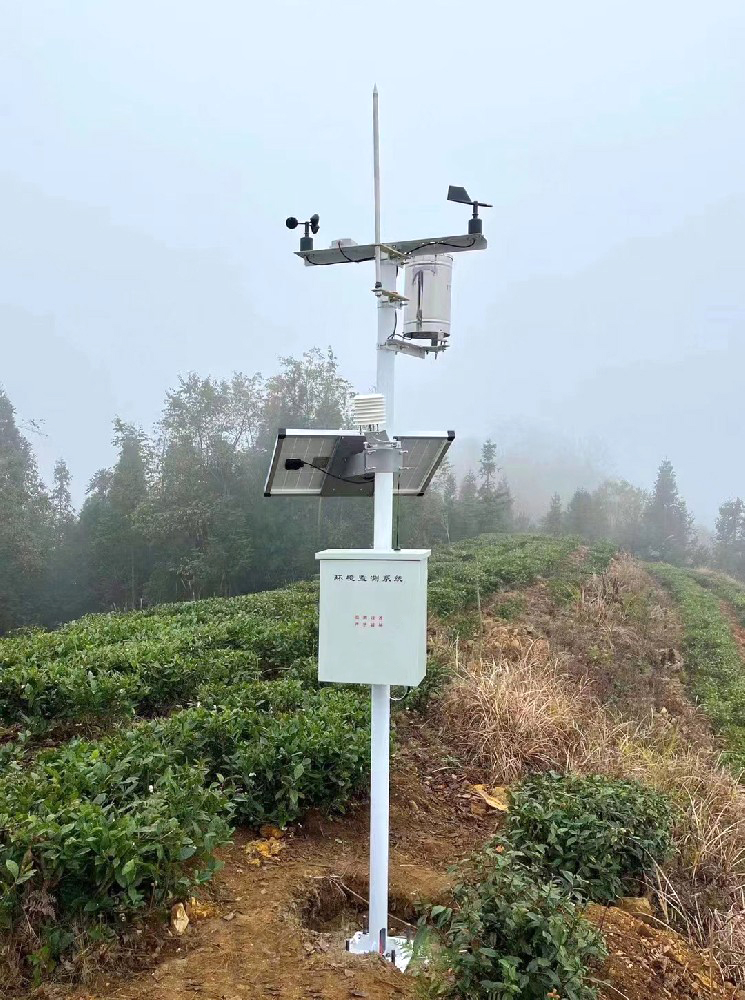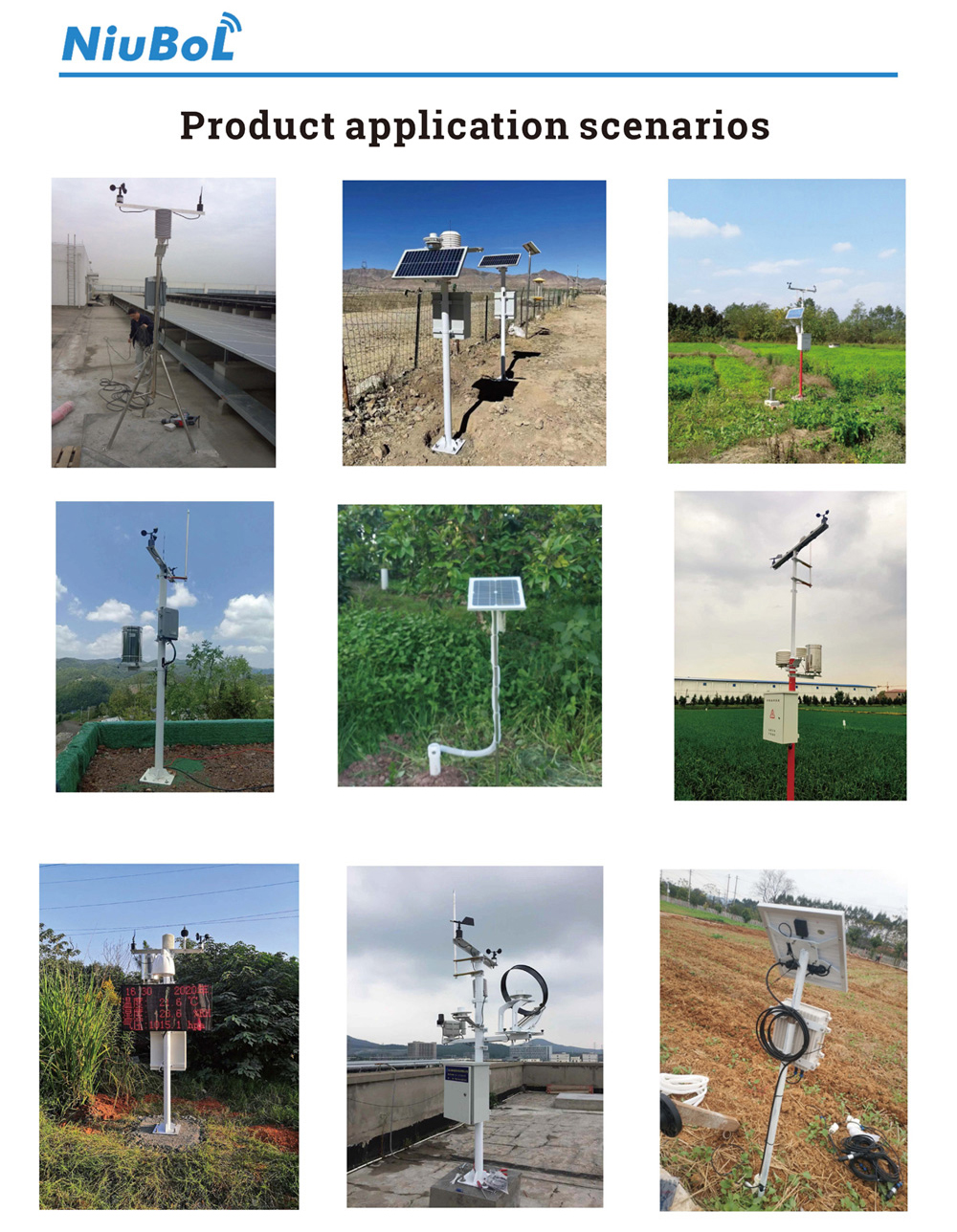

— Blogs —
—Products—
 Consumer hotline +8618073152920
Consumer hotline +8618073152920 WhatsApp:+8615367865107
Address:Room 102, District D, Houhu Industrial Park, Yuelu District, Changsha City, Hunan Province, China
Product knowledge
Time:2024-10-06 14:12:45 Popularity:1387
- Choose an open and sunny place for installation, making sure that there are no tall buildings or trees in the shade.
- The ground should be level to facilitate the installation of brackets and equipment.
- Assemble the weather station bracket according to the equipment instructions.
- Firmly fix the bracket on the ground to ensure its stability.
- Install the various sensors in suitable locations according to the instructions, such as the wind speed sensor should be installed in an open and unobstructed location, the temperature sensor should be installed in the back of the shade, etc. Make sure the sensors are oriented correctly for accurate measurements.
- Make sure the sensor direction is correct for accurate measurement.
- Connect the sensor to the data collector, make sure all connections are firm and correct.
- Connect the solar panel to the weather station battery, make sure the solar panel is facing the right way to maximize sunlight absorption.
- Turn on the weather station and check that all sensors are working properly.
- Perform sensor calibration as needed to ensure data accuracy.
- Regularly check whether the parts of the weather station are intact and damaged.
- Check whether the sensors are clean, and clean the dust and dirt in time.
- Regularly test the function of all sensors to ensure that the data are accurate.
- Check whether the data collector and transmission system work properly.
- Regularly check the status of batteries to ensure that they are charging and discharging properly.
- Replace batteries as needed.
- Periodically update the weather station's software system for optimal performance and new features.
- Avoid installation and maintenance under severe weather conditions such as thunderstorms.
- Installation and maintenance should be performed by a professional to ensure safety and correctness.
- Regularly check the brackets and fixtures to prevent shifting or damage to the equipment due to wind or other causes.
- Avoid prolonged operation in hot or cold environments to prevent damage to the equipment.
- Adopt a design with high protection level (e.g. IP65 or higher) to ensure that the equipment will not be damaged by rain, wind, sand and other severe weather.
- Sensors and electronic components should be dustproof, waterproof and corrosion-resistant.
- Use weather-resistant, UV-resistant, and low-temperature-resistant materials to manufacture the weather station to adapt to various harsh environments.
- Equipped with sufficient battery capacity to cope with insufficient power generation from solar panels due to continuous rainy weather.
- Optimize the power management system to ensure that the operation of critical systems is prioritized when the power is low.
- The equipment should be equipped with automatic protection functions, such as automatically entering the protection mode when the wind speed is too high.
- Through the remote monitoring system, real-time monitoring of equipment status, and remote maintenance or restart when necessary.
- Regularly check the operating status of the equipment and replace damaged parts in time.
- Strengthen the inspection and maintenance of the equipment before and after bad weather to ensure its stable operation.
Through the above measures, the solar photovoltaic weather station can maintain high operational stability under severe weather conditions, ensuring the continuity and accuracy of meteorological data.

1. environmentally sustainable: the use of solar energy as an energy source reduces dependence on fossil fuels and is in line with the concept of green and sustainable development.
2. Wide applicability: especially suitable for remote or agricultural areas without grid coverage, reducing the cost and complexity of laying cables.
3. Long-term economy: Although the initial investment is high, the long-term operation cost is low, and no need to pay for electricity, saving energy costs.
4. Independence: independence from grid failures ensures continuity of data collection.

1. large initial investment: need to buy solar panels, batteries and other equipment, the initial cost is high.
2. Weather dependence: In rainy days or winter when sunshine is insufficient, power generation is reduced and additional storage equipment may be required to ensure continuous power supply.
3. Maintenance requirements: Although maintenance is relatively simple, solar panels need to be cleaned regularly to maintain efficiency.
1. Stable and reliable: Electricity supply is usually stable in cities or agricultural parks, making it suitable for situations where continuous power support is required.
2. Easy to maintain: when connected to the grid, routine maintenance is low, and once connected, little additional equipment is required.
3. Cost clarity: although there is a long-term need to pay for electricity, the initial installation cost is low and the cost of electricity is predictable.

1. Environmental constraints: requires grid coverage and is inconvenient to install in remote areas.
2. Energy costs: long-term use requires ongoing electricity payments, and the total cost can be high for agro-meteorological stations operating over a long period of time.
3. Environmental impact: relies on non-renewable energy sources and is not as environmentally friendly as solar energy.
The choice of power supply depends on the needs of the specific application scenario, such as proximity to the grid, budget, environmental sustainability requirements, and the importance of continuous power supply.

Summarize:
When choosing the power supply method for a weather station, solar power supply is suitable for remote or grid inaccessible areas due to its advantages of environmental protection, economy and independence, while utility power supply is more suitable for occasions with good grid coverage and high requirements for continuous power supply due to its stability, simplicity and clear cost. When choosing, it is necessary to comprehensively consider factors such as geographic location, budget, and environmental requirements.
Related recommendations
Sensors & Weather Stations Catalog
Agriculture Sensors and Weather Stations Catalog-NiuBoL.pdf
Weather Stations Catalog-NiuBoL.pdf
Related products
 Combined air temperature and relative humidity sensor
Combined air temperature and relative humidity sensor Soil Moisture Temperature sensor for irrigation
Soil Moisture Temperature sensor for irrigation Soil pH sensor RS485 soil Testing instrument soil ph meter for agriculture
Soil pH sensor RS485 soil Testing instrument soil ph meter for agriculture Wind Speed sensor Output Modbus/RS485/Analog/0-5V/4-20mA
Wind Speed sensor Output Modbus/RS485/Analog/0-5V/4-20mA Tipping bucket rain gauge for weather monitoring auto rainfall sensor RS485/Outdoor/stainless steel
Tipping bucket rain gauge for weather monitoring auto rainfall sensor RS485/Outdoor/stainless steel Pyranometer Solar Radiation Sensor 4-20mA/RS485
Pyranometer Solar Radiation Sensor 4-20mA/RS485
Screenshot, WhatsApp to identify the QR code
WhatsApp number:+8615367865107
(Click on WhatsApp to copy and add friends)
